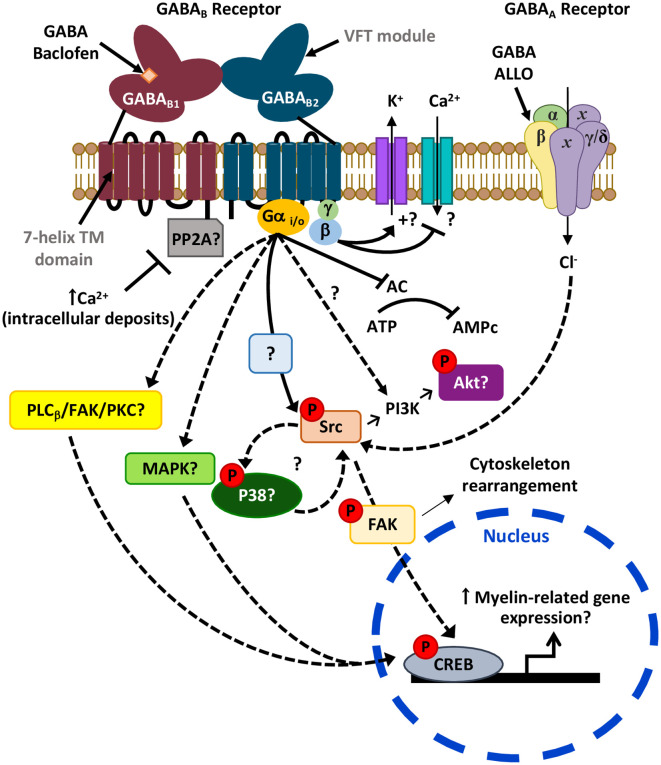Figure 3.
Possible signaling pathways downstream GABARs leading to myelination. Activation of the Gi/o-linked GABABR may reduce CREB phosphorylation as it is negatively coupled to adenylyl cyclase (AC; Luyt et al., 2007). Alternatively, it may also induce CREB phosphorylation possibly via activation of PLCβ/FAK/PKC or MAPK cascades, as observed in neurons (Carlezon et al., 2005; Zhang et al., 2015). Moreover, activation of GABABR leads to Src phosphorylation (Serrano-Regal et al., 2020) that could ultimately induce CREB activation. Phosphorylation of Src may also lead to Akt phosphorylation via PI3K as observed earlier (Barati et al., 2015), and contribute to a positive feedback loop with p38MAPK (Mugabe et al., 2010; Lin et al., 2015), which is involved in myelination (Fragoso et al., 2003, 2007). On the other hand, the GABAB1 subunit of GABABR might be sequestered by phosphatases like PP2A (as occurs in some neurons), a mechanism that blocks its activity and can be reverted by high intracellular Ca2+ levels (Li et al., 2020). Finally, the GABAAR allosteric modulator ALLO regulates Schwann cell (SC) myelination via Src-FAK signaling, involving cytoskeleton reorganization (Melfi et al., 2017).

